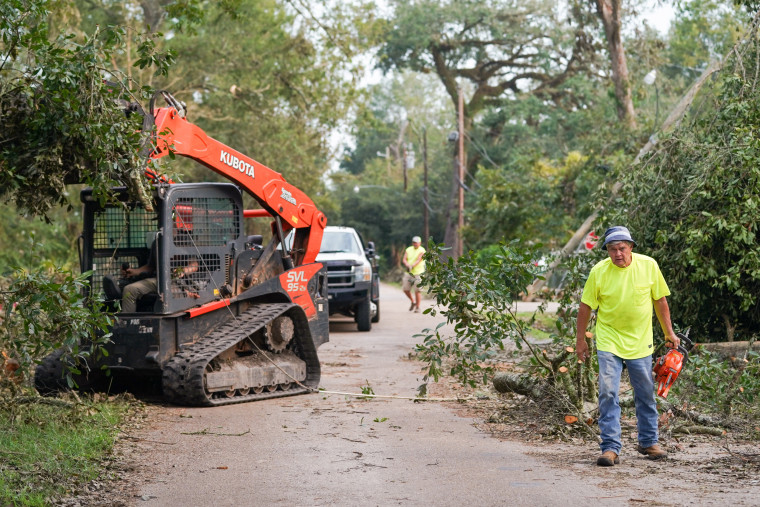J. Lee Driskell was already on the road from her home in Brooksville, Florida, to Louisiana in her camper — the “Hurricane Hilton,” as she calls it — when she got a call hiring her to bring crews to help clean up after Hurricane Ida.
It’s the kind of call that’s becoming more frequent. Driskell's traveling disaster response company, HernandoAg, has grown from a fledgling two-person business during the brutal days after Hurricane Florence in 2018 to a government subcontractor with hundreds of workers.
Like thousands of other businesses, HernandoAg makes money from disaster recovery jobs across the country, helping communities do everything from picking up trash and hauling debris to local dumps to removing trees that threaten power lines after storms like Ida. Once fragmented, the disaster recovery industry has grown swiftly in response to the many major natural disasters that have hit the U.S. in recent years. Even Wall Street has taken notice.
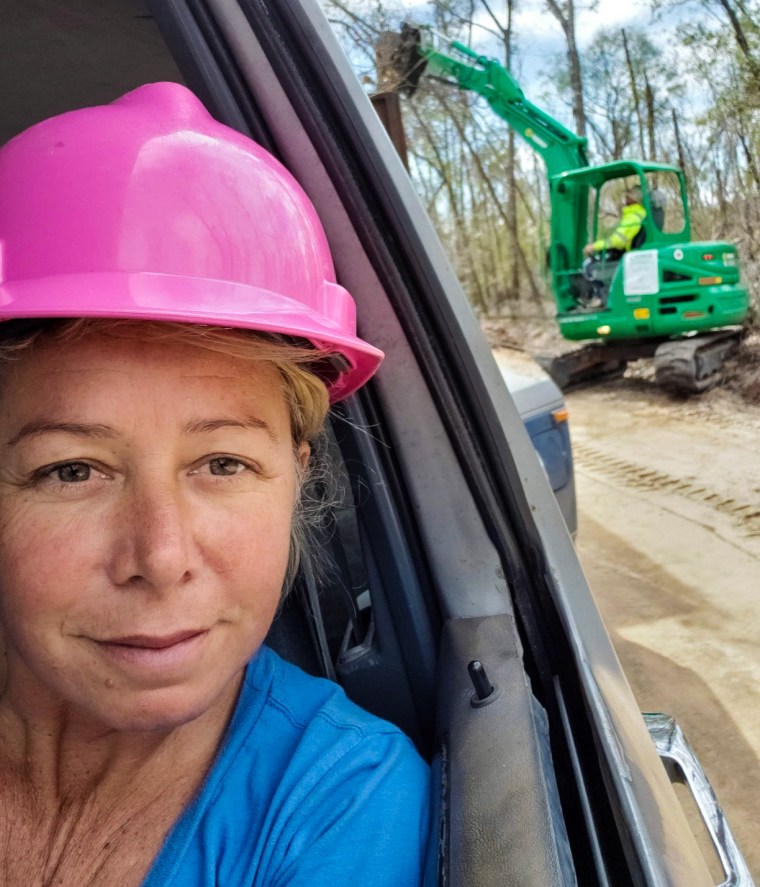
“There is no way this industry is going to slow down,” said Driskell, who joined the company as a co-owner with her boyfriend after losing all of her belongings in two hurricanes. “There is only going to be more and more disasters. For me, it’s a no-brainer.”
The United States set a record in 2020 of $22 billion in damage from weather and climate events, according to the National Oceanic and Atmospheric Administration, and natural disaster recovery businesses like the ones led by Driskell are expecting to grow. Almost half of restoration and recovery companies plan to see a 10 percent increase in sales revenue this year, according to the Cleanfax Restoration Benchmarking Survey, a trade publication that publishes an annual survey tracking trends in the restoration and cleaning business.
“This is an industry that with climate change is going to be increasingly more in demand,” said Amy Chester, managing director of the nonprofit disaster recovery advocacy group Rebuild by Design. “We’ve seen with Covid and other storms that once supply chains are broken and you can’t get what you need from the Home Depot adjacent from your house, there will always be a second industry to fill that need.”
Days before a storm is expected, workers begin gathering supplies and preparing to travel to where the storm will hit. The jobs themselves are a blend of first responder and cleanup crews. During the first weeks after a storm, workers are charged with clearing debris from roads and neighborhoods so that ambulances and fire trucks can reach areas cut off by fallen trees or downed power lines. Because they are often the first to arrive in devastated areas, they frequently are called on to free families pinned inside their homes from a fallen tree or tie down tarps to prevent rain from causing more damage to a building.
“I tell everybody I do God’s work because there are not a lot of us out there who can pick up and go,” said Jason Marshall, owner of Marshall Family Services, a disaster recovery company in Soso, Mississippi. “When someone is in devastation and they have nothing, we’re here to help them pick up the pieces.”
It can be a grueling and dangerous job. In the first weeks after a natural disaster, government agencies are often stretched or have broken down leading to confusion, even chaos, on the ground, said Nik Theodore, a professor in the University of Illinois Chicago’s Department of Urban Planning and Policy. While some companies bus in their own crews, many contractors use social media to find workers or pick up day laborers, often in front of hardware stores, he said. Such ad hoc strategies can lead to wage theft and makes it difficult for workers to recover pay.
“The disaster recovery zone becomes the Wild West, where a lot of rules go out the window,” he said.
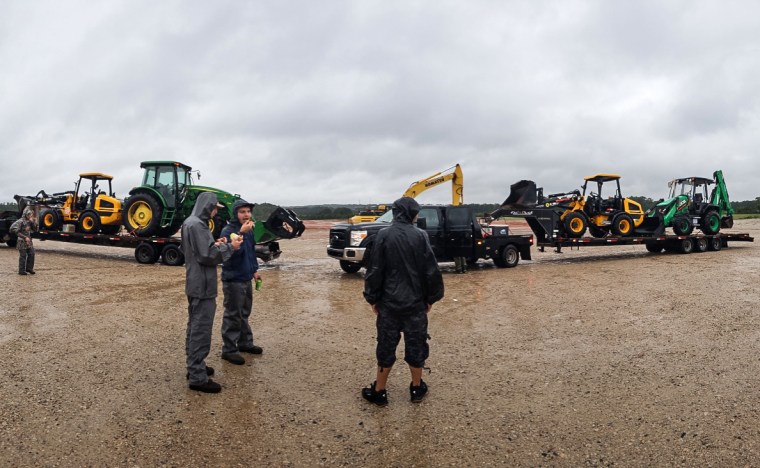
While starting pay is typically around $15 an hour, the hours are long. Storm laborers often work 12- to 17-hour days, through power and water outages and little or no access to showers or bathrooms, according to NBC News interviews with more than a dozen storm workers. One worker said she slept on a case of water bottles in her truck after Hurricane Florence. Another worker said that during the Texas ice storm in February, four workers piled into a truck and ran the engine all night to stay warm.
“You’re 100 percent on your own,” said Michael Kelly, who runs a debris hauling company based in Callahan, Florida. After Hurricane Irma hit Florida in 2017, Kelly paid to sleep at a flooded hotel that lost its roof in the storm.
“It was better than sleeping in a truck,” he said.
The tough conditions have become accepted in an industry that is becoming big business.
Disaster cleanup is now a $200 billion industry led by about a dozen dominant players and thousands of small businesses competing for a slice of a growing revenue pool, according to Mark Springer, president of the Restoration Industry Association, a trade group that represents businesses that restore or clean property damage as a result of floods, fires or sewage accidents. As climate change boosts the frequency and destructiveness of natural disasters, the restoration industry is only expected to expand.
“The size of the industry really depends on the number of natural disasters we have in a year,” Springer said. “With this year’s polar vortex, hurricanes and wildfires in California, it’s going to be a big year.”
The restoration and disaster recovery industry has gone through a recent wave of consolidation, partially driven by private equity acquisitions in a sign that Wall Street finds it a source of steady and reliable cash flow. The private equity giant Blackstone bought a majority stake in the U.S. restoration franchise company Servpro in 2019. That same year, American Securities acquired the Michigan-based restoration company Belfor. More recently, Brookstone Partners provided financing to Hudson Valley Restoration & Mitigation to help it acquire local competitors.
But even with widespread consolidation, storm chasers still dominate a niche market that is considered too unpredictable for private equity, Springer said.
From May to November, storm workers are ready to pack up and head toward disaster areas at a moment’s notice. Many depend on Facebook groups such as “Storm Work” to follow storms or seek truck drivers and subcontractors with heavy equipment.
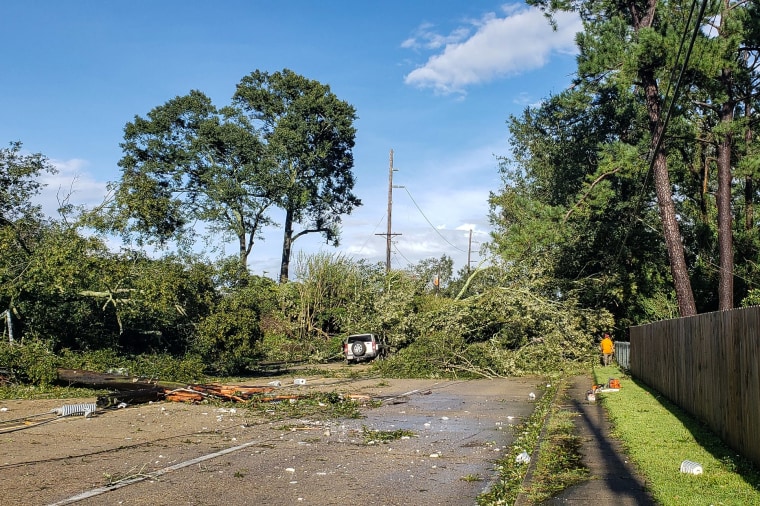
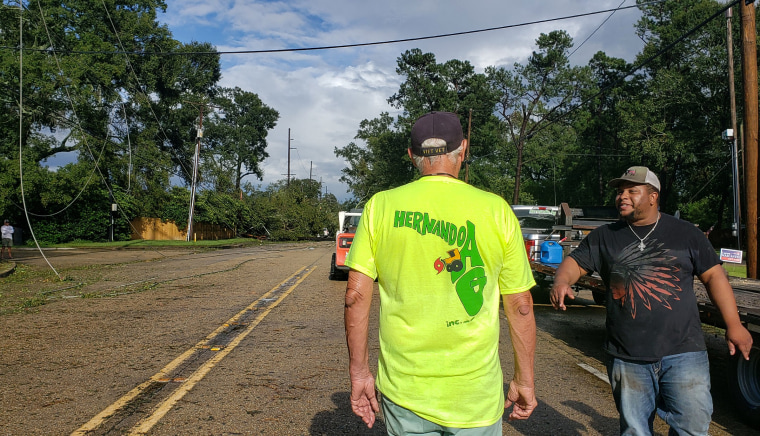
“We Been Notified By 2 Different Primes To Be Ready If ‘HITS LOUISIANA’…..NEED 100 PUSH CREWS…LAFAYETTE-MISSISSIPPI LINE….” reads a post in the Facebook group from Thursday.
“I got a skid steer, grapple, mulcher, and operator,” reads another post from Saturday. “Just need to know who is hiring for Ida.”
Storm recovery companies earn their income through home insurance payouts, utility company contracts or securing a highly coveted deal as a prime contractor with the Federal Emergency Management Agency, deals that can be worth tens of millions of dollars. But top contractors subcontract out to smaller companies who then contract other companies, with each tier taking a cut. By the time it reaches the smallest business at the bottom rung, revenues can be thin and payday can be delayed, according to several disaster recovery businesses interviewed by NBC News.
“It’s very stressful,” Kelly said. “I live off credit cards.”
But the precarity of storm work has its benefits. After a few months of relentless work, workers are able to rest and work more regular hours chopping down trees or working construction closer to home.
The hope, Driskell said, is that the company will grow large enough to move up the chain of government contracting and snag a prime deal with FEMA.
“You’re not making a fortune doing this,” she said. “But you help people and you get to feel good about it.”
